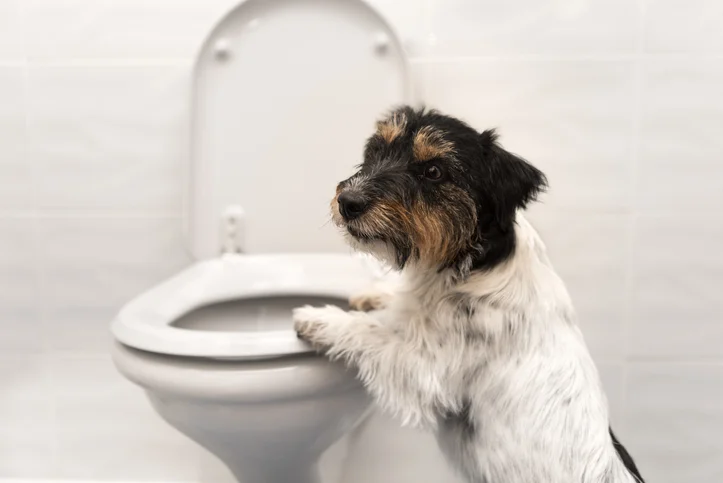The Dangers of Animal Waste in the Toilet
The Dangers of Animal Waste in the Toilet
Blog Article
Almost everyone is bound to have their own individual idea with regards to 10 Things You Should Never Flush Down The Toilet.

When it comes to disposing of waste, particularly animal waste, many individuals often consider the hassle-free alternative of flushing it down the toilet. Nonetheless, this apparently easy service can have major consequences for the setting and public health. In this write-up, we'll explore why flushing pet waste down the toilet is a negative concept and offer alternative approaches for proper disposal.
Introduction
Proper garbage disposal is critical for keeping ecological sustainability and public health. While it might seem safe to flush animal waste down the toilet, it can result in different problems, both for the setting and human health.
Risks of flushing animal waste
Environmental impact
Purging pet waste introduces hazardous microorganisms and virus into waterways, which can negatively influence aquatic environments. These pathogens can pollute water sources and damage aquatic life, disrupting delicate environments.
Public health issues
Pet waste consists of damaging germs such as E. coli and Salmonella, which can position severe health and wellness dangers to humans. Flushing animal waste down the commode can infect water materials, leading to the spread of diseases and infections.
Alternatives to flushing
Instead of purging pet waste down the bathroom, there are numerous different disposal approaches that are more environmentally friendly and sanitary.
Composting
Composting pet waste is an environmentally friendly means to get rid of it. By composting, organic matter is broken down right into nutrient-rich soil, which can be utilized to feed yards and plants.
Land fill disposal
Taking care of animal waste in a landfill is another alternative. While not as environmentally friendly as composting, it is a more secure choice to flushing, as it stops the contamination of water sources.
Animal garbage disposal systems
There are specialized pet waste disposal systems available that safely and hygienically dispose of pet waste. These systems often utilize enzymes to break down waste and remove odors.
Steps to appropriate pet waste disposal
To guarantee proper disposal of pet waste, comply with these steps:
Scooping and landing waste
Consistently scoop and bag pet waste utilizing naturally degradable bags. This stops waste from infecting the setting.
Making use of assigned waste bins
Dispose of bagged pet waste in marked waste bins, such as compost bins or garbage dump bins. Prevent flushing it down the toilet in any way expenses.
Cleaning up litter boxes and animal locations frequently
Frequently tidy litter boxes and animal locations to prevent the buildup of waste and bacteria. Use pet-safe cleaning products to preserve hygiene.
Benefits of proper disposal approaches
Adopting correct disposal techniques for animal waste provides several benefits:
Lowered environmental pollution
Appropriate disposal methods reduce the risk of environmental pollution, securing waterways and ecological communities from contamination
Reduced danger of water contamination.
By preventing flushing animal waste down the commode, the danger of water contamination is dramatically decreased, securing public health.
Improved hygiene and hygiene
Appropriate disposal methods promote much better cleanliness and health, developing a much safer atmosphere for both humans and pets.
Conclusion
In conclusion, flushing animal waste down the commode is harmful to the atmosphere and public health. By adopting different disposal approaches and complying with appropriate waste administration practices, we can decrease the unfavorable impact of animal waste and contribute to a cleaner, much healthier earth.
What To Do With Dog Poo – The Do's And Don'ts Of Disposing Of Faeces
Dog poo bins
Some councils provide dedicated dog waste bins in popular dog-walking areas that can take dog poo that has been bagged but you can legally dispose of dog waste in any public litter bin, as long as it is securely bagged. This also applies to your wheelie bin at home.
Do not flush
Water companies do not recommend flushing dog faeces down the toilet because certain parasites can survive the water processing treatment and are potentially harmful to humans. You should also never consider flushing dog poo that has been bagged down the toilet as the bags will not break down and instead create severe blockages in the sewage system.
In the woods
The Forestry Commission promotes a ‘stick and flick’ method for dealing with waste in the woods. This means finding a stick and using it to flick any poo from off the path so that it is out of the way of other walkers. You could also bury it as long as it is not in an area where there might be livestock.
Livestock
Parasites found in dog poo can be transmitted to livestock if they inadvertently eat infected faeces that has been left on grazing land. This could result in the death of sheep or abortion in cattle so you should always make sure you pick up your dog’s waste in fields where livestock could be present.
We hope you enjoyed our topic on . Thank you so much for taking a few minutes to read our blog. Sharing is good. You never know, you may very well be helping someone out. Thank you for taking the time to read it.
Book Report this page